

At a recent research training boot camp, we found ourselves in the company of seasoned international market researchers, each representing different market researcher typologies. As with any conference, there was no shortage of ice-breakers, post-it notes, stick figure drawings, and coffee. But when presented with the option of passively watching a 10-minute TedTalk on the art of storytelling or actively engaging each other in telling research insights as stories, could you guess that only one hand shot up in the room for live practice?
It may not be a surprise that passive participation was the consensus in the room, yet “Finding the story in the data” was pegged as the highest training need in the recent GreenBook Research Industry Trends (GRIT) report. Other top training needs included data visualization skills, alignment of business needs with research methods, and an introduction to emerging technologies & methods.
As the definition of market research and its associated methods broaden to encompass everything from developments in mobile to AI and beyond, it no longer serves researchers to view their work as a clean-cut breakdown between qualitative and quantitative. Researchers have their work cut out for them to cultivate a combination of skills and pioneer the path ahead in partnership with a strong interdisciplinary team. While the paths may vary within an evolving market research landscape, the aim remains the same: to generate meaningful insights that can inspire and inform business decisions and drive brand engagement. So, what does it look like, to be a researcher of the future in this industry?
Here we take a dive into six different market researcher typologies of the future: the data detective & designer, the innovator, the author & amplifier, and the facilitator – and the tools for meeting specific research objectives that come with each.
A good detective does not dive into a case without first defining the problem at hand and forming a hypothesis to test. The detective is not a new persona to research, but arguably is the classic market researcher typologies of all time – the future will be no exception.
Equally as vital to specifying a hypothesis is finding the relationships between the data and structuring the levels of information accordingly. Taking the time to frame data in this way makes for a strong foundation upon which to ground a brand’s strategy. And just as a strong building cannot be built atop a shoddy foundation, the validity of insights teased out from data relies on an acute understanding of the business issue and the integrity of the taxonomy created around it. The following steps can guide the way to uncover compelling patterns within data:
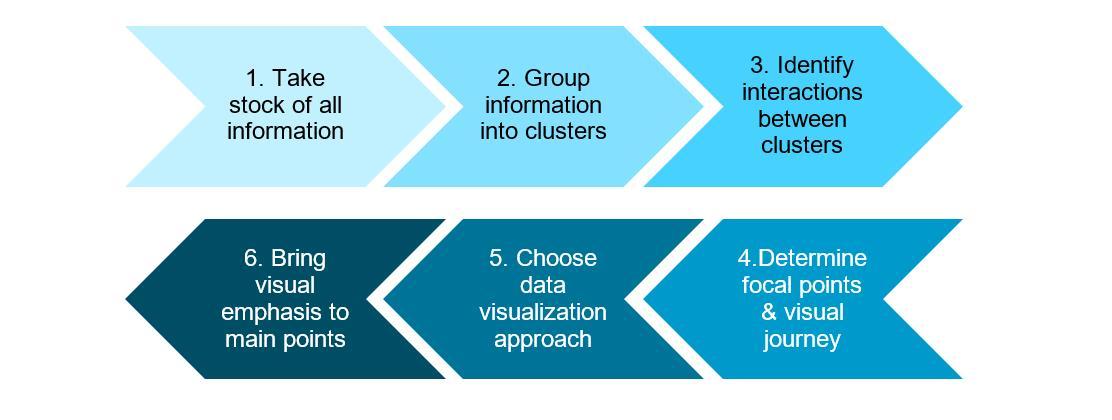
When setting out to create a study, it’s important to remember to refine and retest hypotheses and frameworks based on the insights that arise. This could look like creating multiple iterations within one study, crafting two or three variations of the same study over time, or simply building off previous work that was done to refine frameworks and strategies. As the Chief Research Officer of Simmons research notes, “By linking datasets using what we already know to be high-quality baseline data, we reduce the need to go back and ask respondents questions to which we already have answers, and we give ourselves and our clients more latitude to enhance their data strategically, rather than starting from scratch.”
Taking an iterative approach will often shave down the time that is needed between pivots. Starting with a strong foundation enables market researchers to shift greater time for analysis towards zeroing in on the insights that are generated as a result of iterative and focused experiments. Our favorite detective Sherlock who so elegantly articulated, “When you have eliminated the impossible, whatever remains, however improbable, must be the truth”, would likely agree.
The Sapir-Whorf hypothesis posits that the human brain can be rewired if an individual immerses herself in foreign languages. The brain benefits that come with learning another language include increased intelligence, better understanding of other points of view, and even lowered risks of dementia.
The same benefits can be applied when we diversify approaches taken to market research. What happens when we mix our research methods to unearth points of convergence in the data? The risk of partial or incomplete findings becomes lower, a richer cross-section of perspectives can be represented, and the insights gained are marked by sharper accuracy.
What’s interesting is that while the quantitative field has made a quantum leap due to technological advances, many practitioners feel qualitative research has yet to experience a significant disruption. The GRIT Report findings show that the top two methods of qualitative research are still conducted face-to-face, including in-person focus groups and in-person in-depth interviews. Even with the increase in the use of online communities, traditional focus groups still rank as the most frequently used data collection method among researchers. In the future, different market research typologies must continue to push the boundaries of what they already know to borrow and leverage frameworks or approaches from other sectors.
For example, at Labbrand we often engage on a semiotic basis in tandem with other market research methods to decode a wider range of cultural phenomena. Semiotics cultural research is a methodology involving the study of sign systems and how they create meaning. It consists of gathering, decoding, and clustering visual and verbal codes within a cultural and linguistic context to understand themes, drivers, and their corresponding expressions. The semiotic process ensures that brands do not just create carbon copies of what their customers say they want, but have the foresight to innovate beyond expressed desires. We use it as a tool not only to understand a category but also to reveal trends and white spaces.
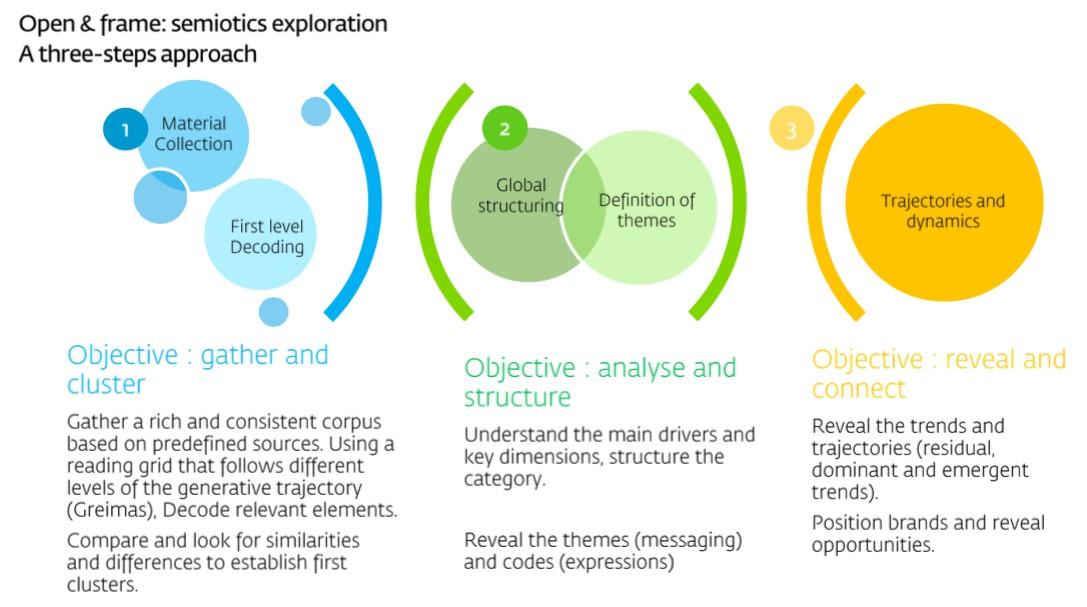
Here again, combining various research methodologies for optimal results isn’t revolutionary, but how we leverage technology and other innovative approaches to uncover pioneering insights will require increased attention in the research world that lies ahead.
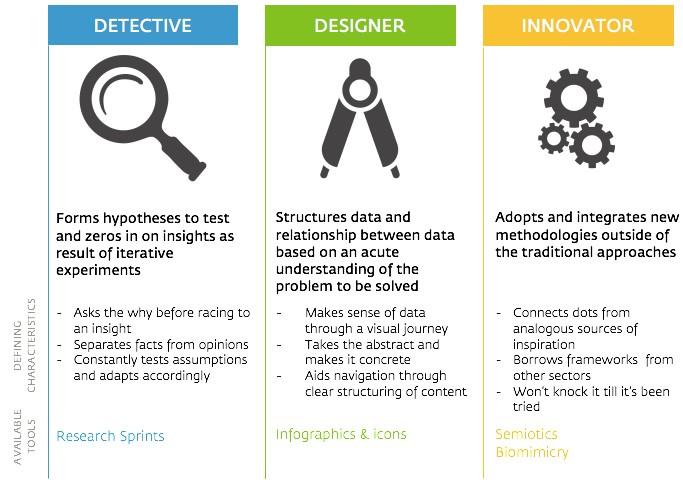
The purpose of data is to inform people, but the value of the researcher’s role lies in the ability to interpret the data and relate the impact of that data to an audience. In short, researchers are not only pattern-recognizers and meaning-makers but also storytellers.
Our stories need to amplify what is heard from end users, providing real quotes, soundbites, and footage from ethnographic research. In doing so, data can then be humanized with real faces, and the voices of end users are brought front and center for various stakeholders.

The word ‘facilitate’ was derived from the Latin root ‘facilis’, or easy. And that’s precisely why we are hired as researchers – to bring clarity to the process of leaping from data to insights to implementation, and ultimately make the journey easier.
Being a strong facilitator of research findings positions researchers as animators of research – bringing the data to life. Sadly enough, the fate of final research reports that are delivered to a black hole, never to be heard from or seen again, is a commonly told tale by researchers. But how can researchers then flip the script and ensure the relevance and value of important insights, translating them into action for their stakeholders?
The below table from the GRIT Report depicts the key strengths, weaknesses, vulnerabilities, and assets as perceived by over 1,500 clients and insights providers. “Recommending business actions based on the research” and “Reporting research results” show up as two of the top weaknesses that offer an opportunity for researchers to grow. These two skills are pivotal to influencing C-Suite level executives and ensuring that end-user needs as discovered through research become integral to the brand decisions made by the decision-makers.
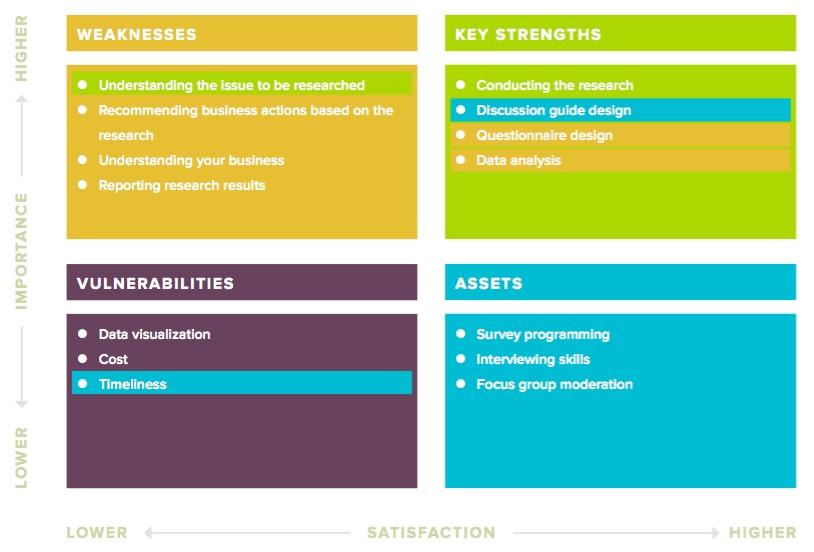
This graphic is from the GRIT (Greenbook Industry Trends Report), which investigates top trends in the market research industry.
Bringing external stakeholders along on the research journey and animating insights starts long before the final project presentation. Communicating key observations regularly while studies are in motion, and providing ways for the client to be immersed in the world of their customer is essential to making research more engaging, memorable, and sticky. By the time the final deliverable meeting rolls around, the seeds should already be planted for clear links between the insights shared and the strategic objectives they serve.
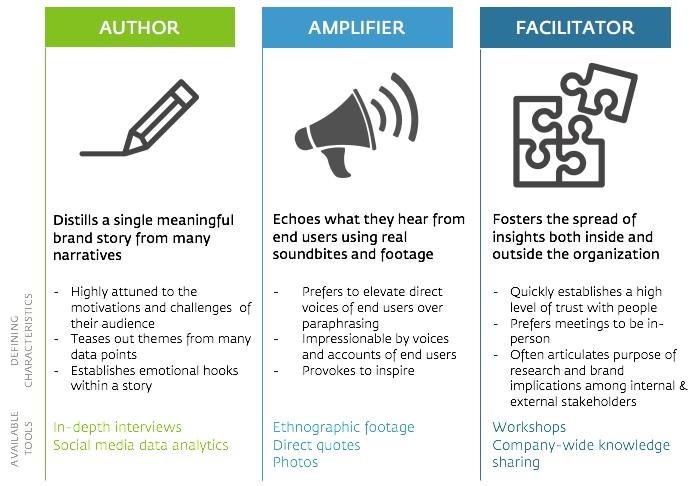
Becoming a market researcher of the future will require nothing short of hybrid thinking, and the wearing of many hats: from Data Detective & Designer, Author & Amplifier, Innovator, Facilitator, and more. American science fiction writer Robert Heinlein said it best: “A human being should be able to change a diaper, plan an invasion, butcher a hog, conn a ship, design a building, write a sonnet, balance accounts, build a wall, set a bone, comfort the dying, take orders, give orders, cooperate, act alone, solve equations, analyze a new problem, pitch manure, program a computer, cook a tasty meal, fight efficiently, die gallantly. Specialization is for insects.”
It turns out the same holds true for the researcher role. While complete mastery and knowledge of all researcher typologies is not a prerequisite for being a researcher of the future, solving client challenges with foresight-driven insights does require a diversely skilled team that is versed in wearing many different hats. Teams that embrace the triangulation of research methods will undoubtedly be more effective in drawing insights that can act as a guiding compass for driving meaningful brand innovations.
A Labbrand Group Company © 2005-2024 Labbrand All rights reserved
沪ICP备17001253号-3* Will be used in accordance with our Privacy Policy
To improve your experience, we use cookies to provide social media features, offer you content that targets your particular interests, and analyse the performance of our advertising campaigns. By clicking on “Accept” you consent to all cookies. You also have the option to click “Reject” to limit the use of certain types of cookies. Please be aware that rejecting cookies may affect your website browsing experience and limit the use of some personalised features.